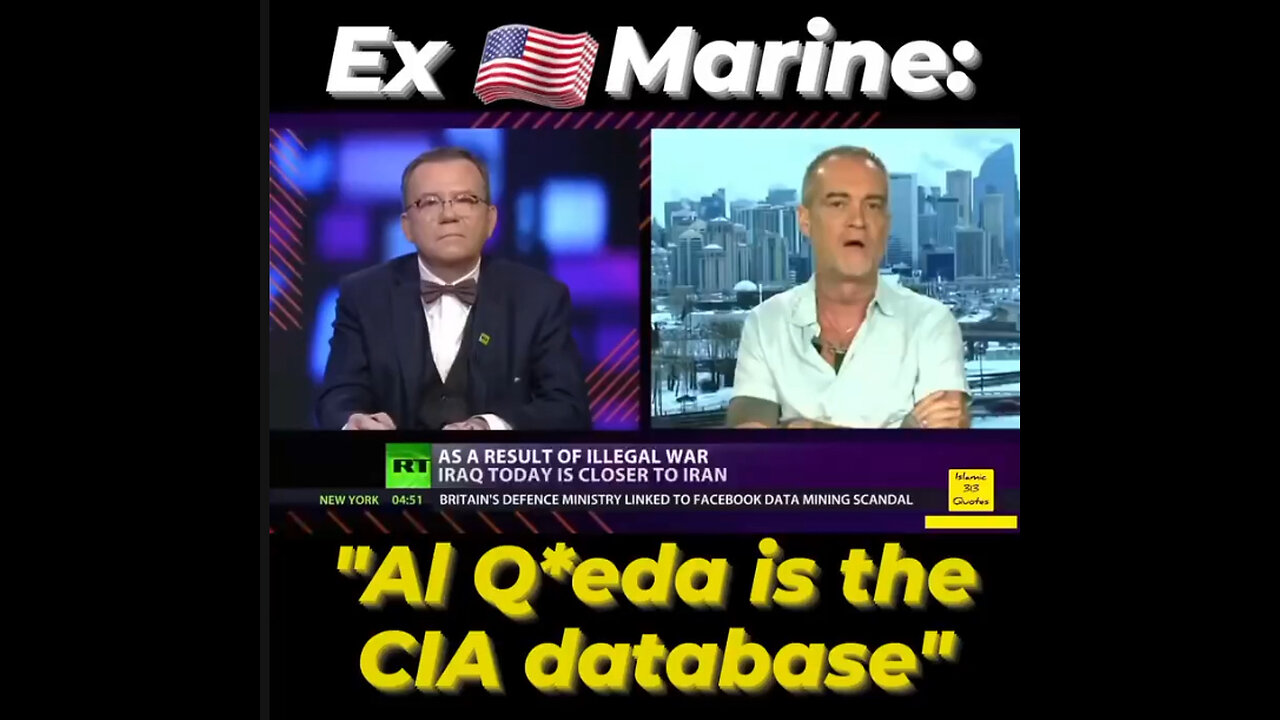Premium Only Content

Unmasking Government-Sponsored Terrorism: The Power Behind Proxy Wars and Hidden Agendas
The concept of government-sponsored terrorism is deeply polarizing, challenging the narrative of security, freedom, and peace that most democratic governments publicly promote. Yet, behind this façade, there is significant evidence that some governments have funded, trained, or facilitated armed groups to serve political agendas. This approach is often employed to destabilize regions, influence regime changes, or shift public opinion in favor of foreign intervention. Here’s an exploration of government-sponsored terrorism, focusing on the complexities of alliances, control, and the power struggles that fuel these covert operations.
The Birth of Proxy Groups: Control by Proxy, Justification by Fear
Many modern extremist organizations have origins tied to foreign intelligence agencies. Al-Qaeda, for instance, was reportedly part of a broader strategy to push back Soviet influence during the Afghan-Soviet War. The CIA allegedly funneled resources and training to mujahideen fighters—who would later form the core of al-Qaeda—as part of Operation Cyclone, one of the most extensive covert operations of the Cold War. This tactic effectively created a “proxy enemy,” which was initially beneficial in countering Soviet expansion but later spiraled out of control, ultimately leading to the 9/11 attacks.
In similar ways, groups like ISIS have reportedly benefited from indirect support. There are claims that Western intelligence agencies and allies in the region may have funneled resources, either directly or through intermediaries, that ended up in the hands of extremist factions. This support has been largely justified as aiding “moderate rebels” against regimes like Syria’s. But the fragmentation of these groups and their ideological shifts have blurred lines, raising questions about who is a true ally and who becomes a Frankenstein’s monster, wielding violence that extends beyond original intentions.
The Role of Israel and Geopolitical Fragmentation
A recurring theme in discussions of government-sponsored terrorism is the notion of regional control and fragmentation. In the Middle East, a key strategy often attributed to Western powers and Israel involves creating instability to weaken surrounding nations. This destabilization, according to some analysts, aligns with long-term geopolitical aims to prevent unified opposition in the region, securing both influence and resources. The concept of “balkanization” reflects the idea of dividing nations into smaller, more manageable entities, making it difficult for any single power to rise as a formidable challenger.
This fragmentation arguably serves Israel’s interests, securing its borders and weakening regional adversaries. The consistent U.S. support for Israel, including substantial military aid and political backing, aligns with the interests of both countries in maintaining control over a fractured region. The influence Israel wields over U.S. foreign policy, as evidenced by high-profile speeches to the U.S. Congress and extensive lobbying efforts, further underscores the interconnected nature of these strategies.
Media and Public Perception: Shaping the Narrative
Western media plays a significant role in shaping public opinion, often framing interventions as “liberation efforts” or “defensive actions.” However, these narratives sometimes ignore underlying agendas, such as resource acquisition, regime change, or power projection. Media often demonizes enemy groups while overlooking the funding and political ties that once supported them, creating a selective memory that reinforces government-sanctioned viewpoints.
For example, the large-scale protests by Muslims denouncing groups like ISIS receive minimal coverage in Western media. This selective reporting skews public perception, reinforcing the idea that all of Islam is aligned with extremism, when in reality, many Muslim communities vocally oppose such ideologies. The result is a public that is more willing to accept military intervention under the guise of “national security,” often unaware of the complex histories behind these organizations.
Collateral Damage: Civilian Lives and Long-Term Destabilization
The fallout from government-sponsored terrorism is profound, as local populations suffer disproportionately. Countries like Syria, Iraq, and Afghanistan, which have been battlegrounds for proxy wars, have seen entire infrastructures destroyed, leading to mass displacement, poverty, and loss of life. When government-sponsored terrorism is employed as a strategy, it often brings long-term destabilization, which can take generations to recover from.
This cycle of violence fuels anti-Western sentiments, which in turn is used as a justification for further intervention, creating a self-perpetuating loop of conflict. It’s a cycle where powerful governments benefit strategically, while civilians in war-torn regions bear the brunt of the consequences.
Conclusion: Breaking the Cycle of Proxy Wars and Hidden Agendas
Government-sponsored terrorism is a complex and often hidden aspect of modern geopolitics. While the official narratives champion freedom and security, the undercurrents reveal a different story—one where power, resources, and influence drive the creation and manipulation of extremist groups. Breaking free from this cycle requires transparency, accountability, and a global push toward ethical foreign policy that prioritizes peace over covert control.
The question remains: as citizens become more informed about these dynamics, will they demand a shift toward policies that value human life over geopolitical gains?
-
 LIVE
LIVE
Etheraeon
9 hours agoWorld of Warcraft: Classic | Fresh Level 1 Druid | 500 Follower Goal
507 watching -
 LIVE
LIVE
VapinGamers
2 hours ago🎮🔥Scrollin’ and Trollin’: ESO Adventures Unleashed!
584 watching -
 LIVE
LIVE
a12cat34dog
3 hours agoGETTING AFTERMATH COMPLETED :: Call of Duty: Black Ops 6 :: ZOMBIES CAMO GRIND w/Bubba {18+}
167 watching -
 LIVE
LIVE
NubesALot
5 hours ago $0.02 earnedDark Souls Remastered and party games
368 watching -
 LIVE
LIVE
GamersErr0r
17 hours agoOverwatch 2
213 watching -
 LIVE
LIVE
Phyxicx
3 hours agoRocket League with Friends! - 11/22/2024
115 watching -
 LIVE
LIVE
STARM1X16
4 hours agoFriday Night Fortnite
85 watching -
 29:51
29:51
Afshin Rattansi's Going Underground
19 hours agoJimmy Dore on Ukraine & WW3: Biden Wants a War that Trump CAN’T Stop, ONLY Hope is Putin’s Restraint
56.7K18 -
 DVR
DVR
Fresh and Fit
5 hours agoExposing WHO Killed JFK w/ Cory Hughes & Tommy Sotomayor
72.6K24 -
 LIVE
LIVE
RanchGirlPlays
5 hours ago🔴 Red Dead Redemption: Let's go help De Santa 🤠
179 watching